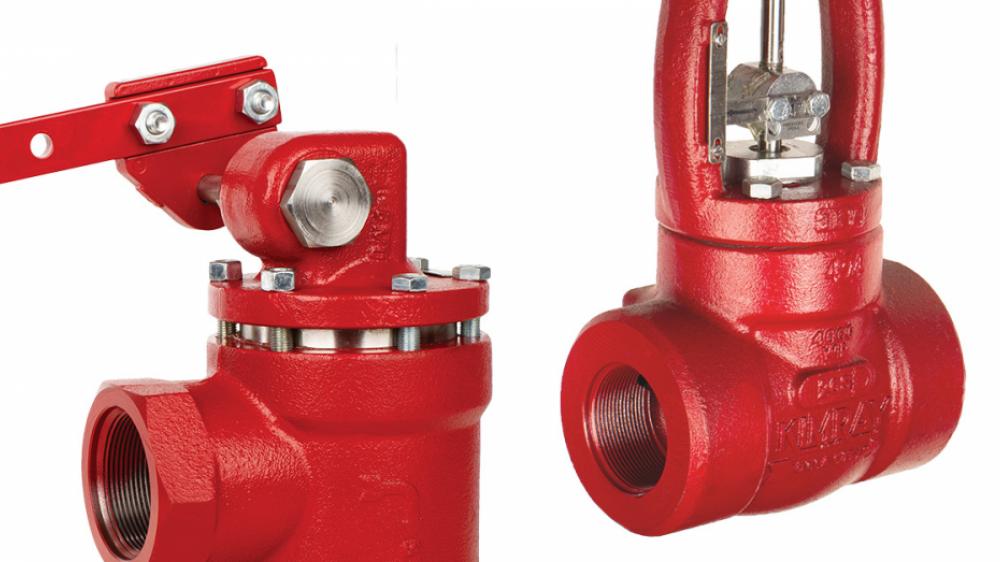Enhancing Operational Performance with Advanced Control Valves
Enhancing Operational Performance with Advanced Control Valves
Blog Article

Maximize Energy Cost Savings and Comfort With Advanced Building Automation Controls
In the world of modern-day style and facility monitoring, the assimilation of sophisticated building automation regulates stands as a crucial innovation. The merging of technology and sustainability has actually birthed a brand-new age where energy performance, comfort optimization, and operational streamlining are no much longer obtainable realities yet distant desires. By using the power of automation, buildings can adjust, respond, and evolve in methods that were once inconceivable. The possibility for considerable energy financial savings and improved convenience is not just a guarantee but a possibility waiting to be fulfilled. This paradigm change in building monitoring holds the crucial to opening a globe where environmental conscientiousness and owner wellness sympathetically coexist within the wall surfaces of our frameworks.
Energy Effectiveness Benefits
Power effectiveness benefits can substantially lower power intake and functional expenses in buildings. Energy-efficient systems, such as advanced structure automation controls, can enhance the use of resources like air conditioning, heating, and lights, leading to reduced energy costs over time.
Moreover, boosted energy performance can extend the life-span of building tools and systems. By operating more effectively, a/c systems, lighting fixtures, and various other building parts experience less wear and tear, leading to decreased maintenance and substitute expenses. Additionally, energy-efficient buildings frequently command greater building worths and rental rates, giving lasting economic benefits to owners.
In addition, energy effectiveness can boost occupant comfort and performance. Properly controlled interior settings with optimal illumination and thermal problems develop a more conducive and pleasurable work space, causing boosted staff member contentment and efficiency. In general, the energy effectiveness advantages related to advanced structure automation controls are multifaceted, including price savings, ecological stewardship, and occupant well-being.
Improved Convenience Control
Enhancing comfort control in structure environments calls for an advanced assimilation of sophisticated automation systems for ideal occupant wellness. By making use of sophisticated structure automation controls, facilities can customize the interior atmosphere to fulfill the certain needs and choices of occupants. control valves.
By including these advanced controls, buildings can not only enhance comfort but likewise enhance energy effectiveness by enhancing system operations based on actual tenancy and use patterns. Eventually, focusing on owner comfort with sophisticated automation systems leads to an extra enjoyable and healthier interior atmosphere.
Functional Effectiveness Improvements

Moreover, the execution of real-time tracking and analytics devices allows structure operators to recognize energy inadequacies and operational abnormalities quickly. By continually keeping an eye on power usage patterns and system efficiency metrics, adjustments can be made in real-time to optimize energy usage and ensure peak functional performance. control valves. Furthermore, including demand reaction approaches into building automation click to read controls can further boost functional efficiency by dynamically changing power use based on grid conditions and prices signals
Indoor Environment Optimization
Efficient interior climate optimization is an essential element of building automation controls, ensuring residents' convenience and health while maximizing energy cost savings. By making use of innovative sensing units and controls, building automation systems can continuously readjust and check temperature level, humidity levels, air quality, and ventilation to create an optimal indoor environment. Preserving comfortable and constant problems not only improves resident contentment but likewise increases efficiency and general well-being.
Interior environment optimization additionally plays a crucial role in power performance. By fine-tuning home heating, cooling, and ventilation systems based on real-time data and tenancy patterns, constructing automation controls can dramatically minimize energy consumption - control valves. As an example, applying methods such as demand-controlled ventilation and thermal zoning can help minimize power waste while making certain that each location of the building receives the essential conditioning.

Lasting Atmosphere Development
Structure automation controls not just optimize indoor environment conditions for power efficiency and owner comfort yet also lay the structure for producing a lasting environment with strategic monitoring of resources and systems. By integrating innovative building automation innovations, such as sensing units, actuators, and intelligent software program, facilities can check and change energy use in real-time to decrease waste and decrease their carbon footprint. These systems make it possible for predictive maintenance, determining possible issues before they intensify and maximizing tools performance to improve long life and performance.
Additionally, lasting setting creation extends beyond energy administration to include water preservation, waste decrease, and interior air top quality improvement. Building automation controls can regulate water usage, discover leakages, and ensure proper waste disposal practices, adding to overall sustainability efforts. Additionally, by keeping an eye on and regulating air flow and purification systems, these modern technologies enhance owner health and productivity while reducing energy consumption connected with heating and cooling operations.
Conclusion
Finally, advanced structure automation regulates deal considerable benefits in regards to power cost savings, comfort control, operational performance, indoor climate optimization, and developing a lasting atmosphere. By executing these controls, buildings can attain ideal performance while reducing energy intake and boosting resident convenience. It is noticeable that using advanced automation modern technology is vital in improving building efficiency and creating an extra sustainable future.
Power effectiveness advantages can dramatically decrease power consumption and functional costs in structures. Generally, the energy performance benefits connected with advanced structure automation controls are complex, including cost savings, ecological stewardship, and resident health.
Additionally, incorporating demand reaction methods right into structure automation controls can better boost functional performance by dynamically readjusting power use based on grid problems and rates signals.
Structure automation regulates not just maximize interior environment problems for power effectiveness and owner convenience yet also lay his comment is here the foundation for producing a sustainable setting via strategic management of systems and resources.In final thought, advanced building automation manages deal considerable benefits in terms of energy cost savings, convenience control, functional effectiveness, interior environment optimization, and developing a lasting setting.
Report this page